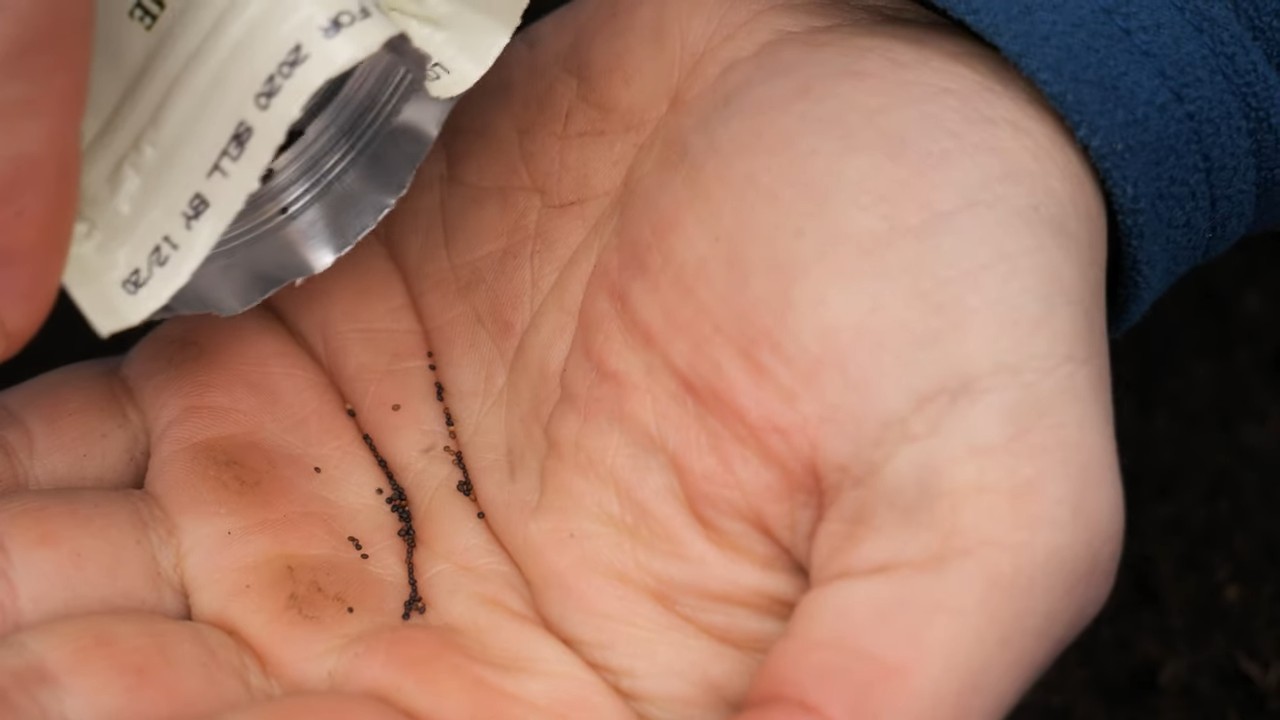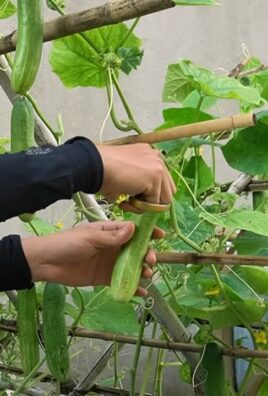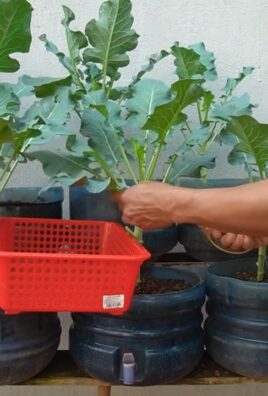Growing Thyme at Home is easier than you might think, and I’m here to show you how! Forget those expensive trips to the grocery store for a few sprigs – imagine stepping right outside your door to snip fresh, fragrant thyme whenever you need it. For centuries, thyme has been more than just a culinary herb; it’s been a symbol of courage and bravery, used in ancient rituals and believed to possess medicinal properties. From the Greeks who burned it as incense to the Romans who flavored their cheese and liqueurs with it, thyme has a rich and fascinating history.
But let’s be honest, most of us just want to add that delicious, earthy flavor to our favorite dishes! And that’s where this DIY guide comes in. I’ll walk you through simple, effective tricks and hacks that will have you successfully growing thyme at home, even if you don’t have a green thumb. Whether you’re a seasoned gardener or a complete beginner, these tips will help you cultivate a thriving thyme plant, saving you money and adding a touch of homegrown goodness to your meals. So, let’s get started and unlock the secrets to a bountiful thyme harvest!

Growing Thyme at Home: Your Comprehensive DIY Guide
Hello, dear garden friends! I am so excited to show you today how you can easily grow thyme at home. Thyme is not only an incredibly versatile herb in the kitchen but also a beautiful, low-maintenance plant that will enrich your garden or balcony. Whether you are a beginner or an experienced gardener, this guide will walk you through the process step by step. Let’s get started!
What you need for growing thyme
Before we begin, here is a list of the things you’ll need:
- Thyme seeds or thyme plants: You can either start with seeds or buy pre-grown plants. Plants are, of course, faster and easier.
- Seed starting mix or high-quality potting soil: Thyme does not like waterlogging, so well-draining soil is important.
- Pots or planters: Choose pots with drainage holes to prevent waterlogging.
- Watering can or spray bottle: For gentle watering.
- A sunny location: Thyme loves the sun!
- Optional: Seed starting trays, a mini-greenhouse (for starting from seed), pruning shears.
Growing Thyme from Seed: Step by Step
If you decide to grow from seed, a little more patience is required, but it is also a very rewarding experience.
- Preparation: Fill your seed starting trays or small pots with seed starting mix. Lightly moisten the soil with a spray bottle. It should be damp, but not wet.
- Sowing: Thyme seeds are very small. Therefore, sprinkle them sparingly on the surface of the soil. You can press them down lightly, but do not cover them with soil, as thyme needs light to germinate.
- Moistening and Covering: Gently spray the seeds again with water. Cover the seed starting trays or pots with a transparent film or a mini-greenhouse to increase humidity.
- The Location: Place the seed starting trays in a warm, bright place, but not in direct sun. A temperature of about 20-25°C (68-77°F) is ideal.
- Patience is required: Keep the soil moist, but not wet. Briefly air out the cover daily to prevent mold growth. Germination usually takes 14-21 days.
- Pricking Out: As soon as the seedlings are large enough (about 5-7 cm or 2-3 inches high and with several pairs of leaves), you can transplant them into larger pots or directly outdoors. Be careful not to damage the roots.
Planting Thyme Plants: The Easy Way
If you have already bought pre-grown thyme plants, planting them is a piece of cake.
- Choose the right pot: Select a pot with enough space for the roots. A diameter of 15-20 cm (6-8 inches) is ideal for a single plant. Make sure it has drainage holes!
- Prepare the pot: Fill the pot with high-quality potting soil. You can also mix in some sand or gravel to improve drainage.
- Insert the plant: Carefully remove the thyme plant from its nursery pot. Loosen the roots a bit before placing it in the new pot.
- Fill and Press: Fill the pot with soil and press it down lightly. Make sure the plant is not sitting too deep. The root ball should be just below the soil surface.
- Watering in: Water the plant thoroughly until water runs out of the drainage holes.
The Perfect Location for Your Thyme
Thyme is a sun worshipper! It needs at least 6-8 hours of sunlight per day to grow optimally and develop its full aroma.
- Balcony: A south-facing balcony is ideal. Make sure the thyme is protected from strong winds.
- Garden: Choose a sunny spot with well-draining soil. Thyme tolerates drought better than waterlogging.
- Windowsill: A south-facing window is a good option if you don’t have a balcony or garden.
The Right Care: How to Keep Your Thyme Happy
Thyme is a relatively low-maintenance plant, but you should keep a few things in mind to ensure it grows healthy and strong.
- Watering: Water your thyme only when the soil is dry. Avoid waterlogging, as this can lead to root rot. You may need to water more often in the summer than in the winter.
- Fertilizing: Thyme does not need much fertilizer. A light feeding in the spring with an organic herb fertilizer is usually sufficient.
- Pruning: Regular pruning promotes growth and prevents the thyme from becoming woody. Cut the shoots back by about a third after the flowering period. You can use the cut shoots for cooking or drying.
- Overwintering: Thyme is hardy, but in very cold regions, it may be wise to cover it with brushwood or fleece. Place potted plants in a sheltered location, e.g., against a house wall.
Harvesting Thyme: When and How
You can harvest thyme all year round, as soon as the plant is large enough.
- The best time: The best time to harvest is in the morning after the dew has dried. That’s when the aroma is most intense.
- The harvesting technique: Cut the shoots with a sharp pair of scissors or a knife. You can harvest individual leaves or entire sprigs.
- Storage: Fresh thyme will keep for a few days in the refrigerator wrapped in a damp cloth. You can also dry or freeze it.
Drying Thyme: Here’s How
Dried thyme is a great way to preserve the aroma of summer.
- Preparation: Tie the harvested thyme sprigs into small bundles.
- The drying process: Hang the bundles in a dry, dark, and well-ventilated place. You can also dry them on a baking sheet in the oven at a low temperature (approx. 40°C or 100°F).
- Storage: Once the leaves are dry and brittle, you can pluck them from the stems and store them in an airtight container.
Common Problems and Solutions
Problems can also arise when growing thyme. Here are some common problems and how you can solve them:
- Yellow leaves: Can be a sign of overwatering or a nutrient deficiency. Check your watering and fertilize if necessary.
- Root rot: Is caused by waterlogging. Ensure good drainage and water less.
- Pests: Thyme is relatively resistant to pests. Occasionally, aphids may appear. You can combat them with a jet of water or a mild soap solution.
Thyme in the Kitchen: Versatile and Delicious
Thyme is an incredibly versatile herb that can be used in many dishes.
Soups and stews: Thyme adds a savory note to soups and stews.
Meat dishes: Thyme pairs excellently with lamb, poultry, and beef.
Vegetable dishes: Thyme harmonizes well with potatoes, carrots, zucchini, and eggplant.

Conclusion
So, there you have it! Growing thyme at home isn’t just a whimsical dream for culinary enthusiasts; it’s an achievable reality that brings a wealth of benefits right to your fingertips. From the unparalleled freshness that elevates your dishes to the sheer joy of nurturing a living plant, cultivating your own thyme is an experience that’s both rewarding and surprisingly simple.
Why is this DIY trick a must-try? Because it transcends the limitations of store-bought herbs. Imagine snipping sprigs of fragrant thyme moments before adding them to your favorite recipe, the essential oils bursting with flavor, far surpassing anything you could find pre-packaged. Think of the money you’ll save, no longer needing to purchase small, often wilted, bundles from the grocery store. And consider the environmental impact – reducing plastic waste and supporting a more sustainable lifestyle, one sprig of thyme at a time.
But the benefits extend beyond the practical. Growing thyme is a therapeutic activity, a mindful connection to nature that can reduce stress and enhance your overall well-being. It’s a small act of self-sufficiency that empowers you to take control of your food source and appreciate the simple pleasures of life.
Don’t be afraid to experiment! Try different varieties of thyme, such as lemon thyme for a citrusy twist or creeping thyme for a beautiful ground cover. Consider planting thyme in decorative pots to add a touch of greenery to your kitchen windowsill or balcony. You can even dry your harvested thyme to create your own custom herb blends, perfect for seasoning soups, stews, and roasts throughout the year.
We wholeheartedly encourage you to embark on this thyme-growing adventure. It’s a small investment of time and effort that yields a bountiful return in flavor, savings, and personal satisfaction. And most importantly, we want to hear about your experience! Share your tips, tricks, and triumphs in the comments below. Let’s build a community of home gardeners, all united by our love for fresh, flavorful thyme. Let us know what works best for you in your climate, what varieties you love, and any creative ways you’ve found to incorporate your homegrown thyme into your cooking. Your insights will inspire others to take the plunge and discover the joys of growing thyme at home. So, grab a pot, some soil, and a thyme seedling, and get ready to elevate your culinary creations with the freshest, most flavorful herb imaginable!
Frequently Asked Questions (FAQ)
What is the best way to start growing thyme?
The best way to start growing thyme depends on your preference and resources. You can start from seeds, cuttings, or purchase established seedlings from a nursery. Starting from seeds is the most economical option, but it requires more patience as thyme seeds can be slow to germinate. Cuttings are a faster method, involving rooting a stem cutting in water or soil. Purchasing seedlings is the quickest and easiest way to get started, providing you with a healthy, established plant ready to thrive.
What kind of soil does thyme need?
Thyme thrives in well-draining soil that is slightly alkaline. A sandy or loamy soil mix is ideal. Avoid heavy clay soils, as they retain too much moisture and can lead to root rot. You can amend your soil with perlite or sand to improve drainage. A pH level between 6.0 and 8.0 is optimal for thyme growth.
How much sunlight does thyme need?
Thyme requires at least six hours of direct sunlight per day to thrive. Choose a sunny location in your garden or on your windowsill where your thyme plant will receive ample sunlight. If you are growing thyme indoors, consider using a grow light to supplement natural sunlight, especially during the winter months.
How often should I water my thyme plant?
Thyme is drought-tolerant and prefers to be watered sparingly. Allow the soil to dry out completely between waterings. Overwatering can lead to root rot, which is a common problem with thyme. When you do water, water deeply, ensuring that the entire root ball is moistened. Reduce watering frequency during the winter months when the plant’s growth slows down.
How do I harvest thyme?
You can harvest thyme sprigs as needed throughout the growing season. Use sharp scissors or pruning shears to snip off the top few inches of the stems. Avoid cutting back more than one-third of the plant at a time, as this can weaken it. Regular harvesting encourages bushier growth. The best time to harvest thyme for drying is in the morning, after the dew has evaporated but before the sun gets too hot.
Can I grow thyme indoors?
Yes, thyme can be successfully grown indoors, provided you meet its basic needs. Choose a sunny windowsill or use a grow light to provide adequate sunlight. Use a well-draining potting mix and water sparingly. Ensure good air circulation to prevent fungal diseases. Consider using a terracotta pot, as it helps to wick away excess moisture.
How do I propagate thyme from cuttings?
Propagating thyme from cuttings is a simple and effective way to create new plants. Take a 4-6 inch cutting from a healthy stem, removing the lower leaves. Dip the cut end in rooting hormone (optional) and plant it in a pot filled with well-draining potting mix. Keep the soil moist but not soggy, and place the pot in a warm, bright location. Roots should develop within a few weeks.
What are some common problems with growing thyme?
The most common problems with growing thyme are root rot, fungal diseases, and pests. Root rot is caused by overwatering and poorly draining soil. Fungal diseases can occur in humid conditions. Pests such as aphids and spider mites can occasionally infest thyme plants. To prevent these problems, ensure proper drainage, provide good air circulation, and monitor your plants regularly for signs of pests or diseases.
How do I dry thyme?
There are several ways to dry thyme. You can hang bunches of thyme upside down in a cool, dry, and well-ventilated place. You can also spread the sprigs on a baking sheet and dry them in a low oven (170°F or 77°C) for a few hours. Alternatively, you can use a dehydrator to dry thyme quickly and efficiently. Once the thyme is completely dry, store it in an airtight container in a cool, dark place.
What are some culinary uses for thyme?
Thyme is a versatile herb that can be used in a wide variety of dishes. It pairs well with meats, poultry, fish, vegetables, and eggs. Thyme is a key ingredient in many classic dishes, such as roasted chicken, stews, soups, and sauces. It can also be used to flavor oils, vinegars, and herbal teas. Experiment with different varieties of thyme to discover your favorite flavor combinations.




Leave a Comment